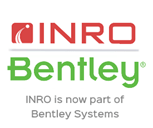Data analysis and activity-based modelling to develop short-term COVID-19 transport policy recommendations for Melbourne
Ali Inayathusein, Jan Zill & Neil France
Veitch Lister Consulting & Infrastructure Victoria, Victoria
This presentation was delivered at the 2021 Online Conference Series and until October 2022 is only available to registered delegates and Content Access Pass holders via Interchange. For information on accessing this and other presentations please review the Content Access Pass options.
ABSTRACT
COVID-19 has had a significant impact on mobility patterns. In Melbourne, impacts have been more prevalent compared with other Australian cities due to the extended and severe second wave related lockdown. This presentation is based on Infrastructure Victoria’s report Transporting Melbourne’s Recovery: Immediate policy actions to get Melbourne moving, which investigated the short-run transport network impacts during the COVID-19 recovery phase.
The work comprised of three stages. The first was development of an evidence base from analysis of travel survey and other mobility data from cities around Australia and New Zealand to understand the likely progression of mobility patterns in Melbourne. The second was to define, based on observed trends, two COVID-19 recovery modelling scenarios which were run using the Melbourne Activity and Agent Based Model (MABM) to understand potential impacts. The third stage involved developing two policy response scenarios, also modelled in the MABM, designed to enable safe, confident travel while facilitating a return to higher levels of economic activity.
A unique feature of this work was the use of an activity-based model that allowed travellers’ whole day journey patterns to be considered when analysing mobility impacts. Unlike a conventional four-step model, this allows a focus on activities instead of trips and trips to be linked to particular agents. For example, as work is an activity, it can be set within the MABM to be undertaken at home for some agents, the reduced commuting time can then be used to schedule other travel for those agents for different durations. This is not possible in a framework that is not activity-based. Overall, this serves as a good case study to highlight some of the benefits of activity-based modelling frameworks.
Author
Ali Inayathusein | VLC
In Ali’s role as the National Director of VLC’s Future Transport Lab, Ali helps his clients understand the impact of transport technology and policy using contemporary datasets, analytical techniques and transport models. Ali joined VLC in 2017 after nine years at Transport for London working across transport modelling, planning and policy appraisal. . Ali is also a member of the Smart Cities Council Urban Mobility Taskforce and takes a keen interest using evidence to drive decision making.
Neil France | Infrastructure Victoria
Neil France, Policy advisor at Infrastructure Victoria based in Melbourne.
Neil joined Infrastructure Victoria in 2018 and is a Policy Advisor with qualifications in civil engineering and architecture. Neil has worked across transport policy reform and was heavily involved in the Transporting Melbourne’s Recovery report’s transport modelling utilising the Melbourne Activity and Agent Based Model.
Jan Zill | VLC
Jan Zill is a Senior Consultant (Model Development) at VLC. He is based in Brisbane, QLD.
Jan’s background is in theoretical and computational Physics, with a broad technical and mathematical skill set. He has professional experience as an Algorithm and Software Engineer in Big Data. Since commencing at VLC in May 2017, Jan has worked on diverse projects, ranging from software development and research projects to model development and estimation. He has worked extensively on public transport and traffic assignment algorithms, with one of the highlights being the design and implementation of a state-of-the-art traffic assignment algorithm in Zenith. He has also developed demand-model components for several strategic transport models, implemented toll choice forecasting algorithms and applied them, investigated the use of machine learning methods in demand modelling, and worked on new activity-based demand models.









